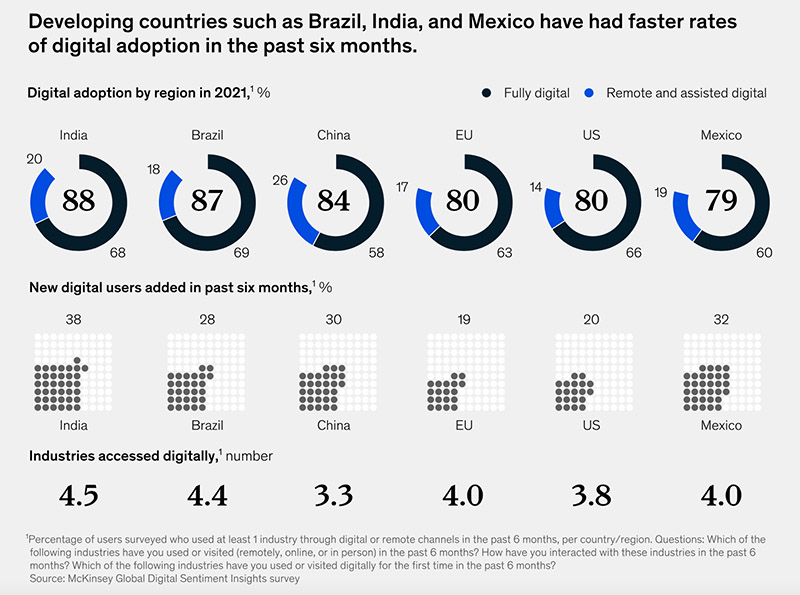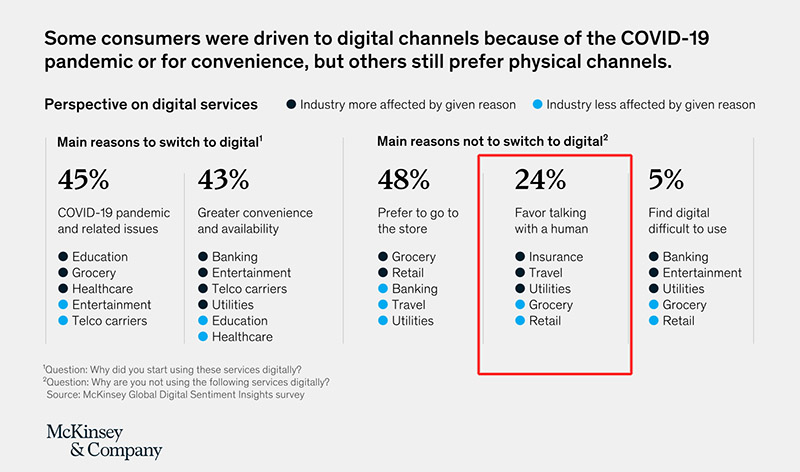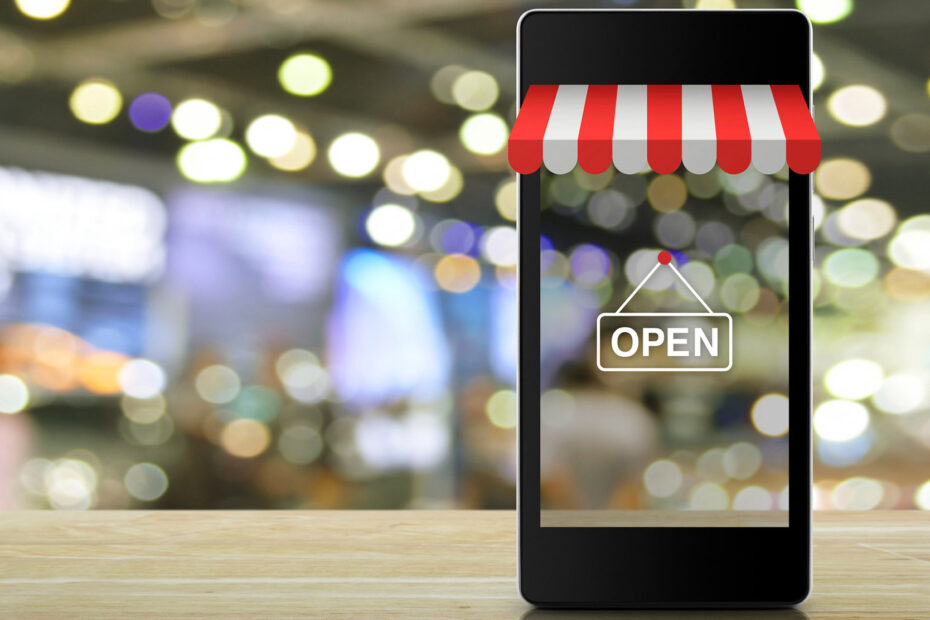During the last 18 months, we have become digital experts: from social media, streaming, digital entertainment, smart-working and e-commerce, while our lives took place almost entirely online during the Covid-19 pandemic.
And, reading the estimates for the foreseeable future, it would seem that most of us have had enough.
According to a survey conducted by McKinsey in April 2021 on the sentiment of global consumers, the double-digit growth that affected the online departments of almost all product sectors is experiencing a moment of adjustment and is preparing to decline.
Digital penetration is now high in many sectors – well above pre-Covid levels – and, once the pandemic is over, consumers are hoping to return to their old habits, i.e. hybrid shopping, a balance between online and offline.
Our web experience likely promises to greatly influence the choice of users to possibly abandon the internet for access to goods or services. On the one hand, some sectors have proved unprepared to offer customers a virtual shopping experience that matches the physical one, leaving consumers unsatisfied. On the other hand, free to surf the web, users have been able to sample the best of online shopping, turning to the leading consolidated web companies, and now they no longer want to settle for sparse and unexciting experiences. At the abandonment of the web channel’s loss.
And there’s more.
The consumer in the post-pandemic: how will they buy?
According to the survey carried out by McKinsey, with a degree of certainty, some indicators can reveal users’ purchasing behaviour in the coming months.
Here are the main findings.
1. A step back from digital
The surge in digital seems to have tapered off. After an unprecedented acceleration, we have been witnessing a slowdown in online consumption since the end of 2020. As in a trend reversal, customers once forced by the lockdown to choose the web can now return to a more physical dimension, especially in some sectors.
2. Rising and falling sectors
From November 2020 to April 2021 – the period in question – some sectors continued to grow at a good pace, such as energy, utilities, insurance and travel. Some areas showed limited growth, such as retail, entertainment and telecommunications, the latter two sectors already highly digitised and now mature. In some sectors, there has even been a decline in trend: take for example online sales in the food segment which have dropped by almost 20% in the last 6 months.
Is an unsatisfactory digital experience to blame?
3. The boom in developing countries
Online shopping is booming in less developed countries, such as India, Brazil and Mexico. The reason? Starting from an immature situation in terms of digitisation, their growth rate is more rapid and the prospects for growth are projected over wider timeframes. In digitally more mature countries where internet access is now a reality, such as Europe and the USA, online shopping could instead lose steam and is showing a bit of fatigue.

4. Why choose digital? Why choose physical?
The rise and fall of online shopping mainly depend on the same reasons that pushed consumers to turn to the internet to buy goods and services.
How strong and resistant are the reasons that brought customers to the online stores?
According to the analysis conducted by McKinsey, most users have chosen digital mainly out of necessity (e.g. the lockdowns imposed by the pandemic) and for convenience, taking advantage of greater flexibility and cheaper opportunities.
Those who continue to choose traditional shopping, on the other hand, do so essentially because they prefer going to the store personally – especially if they have to buy clothing, accessories and groceries – and because they appreciate the interpersonal exchange they have with the staff and shopkeeper. In short, advice, indications and reassurances still pass through the human face of the sales experts.

Keeping Consumers Online: The 4 Ps for Growing
How you should respond to keep users on the web and continue to increase their digital purchases?
Working on the 4 P’s of the online shopping experience, which must be:
• Private, i.e. serious and safe, to respond to 44% of consumers who still do not fully trust digital services.
• Personal, or based on a relationship of trust, stable and long-lasting where the customer is at the centre and the brand works to get to know them better and propose tailor-made offers day by day;
• Pleasant, i.e. satisfying and innovative, simulating and overcoming the satisfaction of making purchases in the store;
• Phygital, which can merge the advantages of online shopping, such as flexibility, comfort and convenience, with those of the offline experience, such as the possibility to see the products to be purchased closely and to benefit from the advice of the staff of sale. How can you do this? Making use of technology and choosing platforms as innovative as they are simple such as ShopCall, which puts the shopkeeper and customer into video communication in a single click and projects the physical store directly on their smartphone. With ShopCall, the sterile experience of online shopping is warmed and enriched by the direct and human interaction with the salesperson who can put their face and smile into it!



